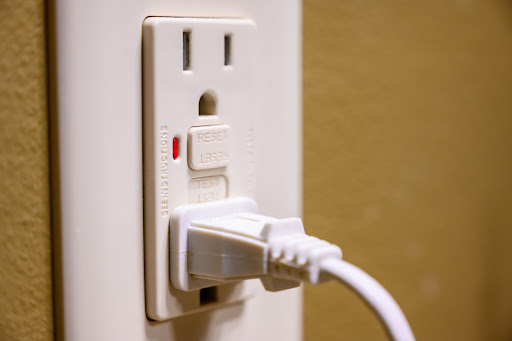Understanding GFCI Outlets: Safety You Can’t Afford to Skip
When it comes to electrical safety in your home, one of the most important devices you can have is a Ground Fault Circuit Interrupter, or GFCI outlet. At first glance, these outlets look like any other, but you can usually spot them by the “test” and “reset” buttons on the front. Their job is simple but critical: to protect you from electrical shock.
A GFCI works by constantly monitoring the flow of electricity through a circuit. If it detects even the slightest imbalance—meaning electricity is escaping the circuit, possibly through water, a damaged wire, or even through a person—it cuts off power in an instant. This reaction happens in a fraction of a second and can quite literally save a life. That’s why GFCI outlets are required by modern building codes in areas where water and electricity are most likely to mix, such as bathrooms, kitchens, basements, garages, and outdoor spaces.
The importance of GFCI protection can’t be overstated. Before these outlets became standard in the 1970s, household electrocutions were far more common. In fact, since their introduction, the Consumer Product Safety Commission has reported a dramatic drop in electrocution-related deaths. It’s an often-overlooked safety feature that has made homes across the country much safer.
One interesting fact about GFCIs is that they don’t just protect people—they also help protect property. By preventing ground faults, they reduce the risk of electrical fires that can occur when electricity travels where it shouldn’t. Another point many people don’t realize is that GFCIs wear out over time. The devices should be tested monthly using the “test” button, and outlets older than 10 years may need replacement to ensure continued protection.
If you’re not sure whether your home has GFCI outlets installed where they’re needed, it’s worth checking. Updating your electrical system with these lifesaving devices is not only a matter of meeting code—it’s an investment in the safety of everyone under your roof. A simple upgrade could prevent a tragedy, and that peace of mind is well worth it.
Is It Time to Upgrade? Contact the Experts!
Testing Your GFCI Outlets at Home
On occasion, a GFCI outlet can fail, leaving the circuit without power or without protection from ground faults. That’s why it is important to test your GFCI outlets at intervals, ideally once a month.
To test your GFCI outlets for proper function:
- Press the “Test” button, which should turn off the circuit.
- Make sure the power is off by plugging something in (lamp, radio, etc.); then unplug it.
- Press the “Reset” button, which should turn the circuit back on.
- Check the power by plugging your device back in.
If any of your GFCI outlets fail this test, promptly alert a professional electrician.
If your home still runs on an outdated electrical panel, don’t wait for an emergency. T.A.P. Electric specializes in electrical panel upgrades in Fort Madison, Des Moines, and Lee counties. Contact us today for a consultation and take the first step toward a safer, more efficient home!
